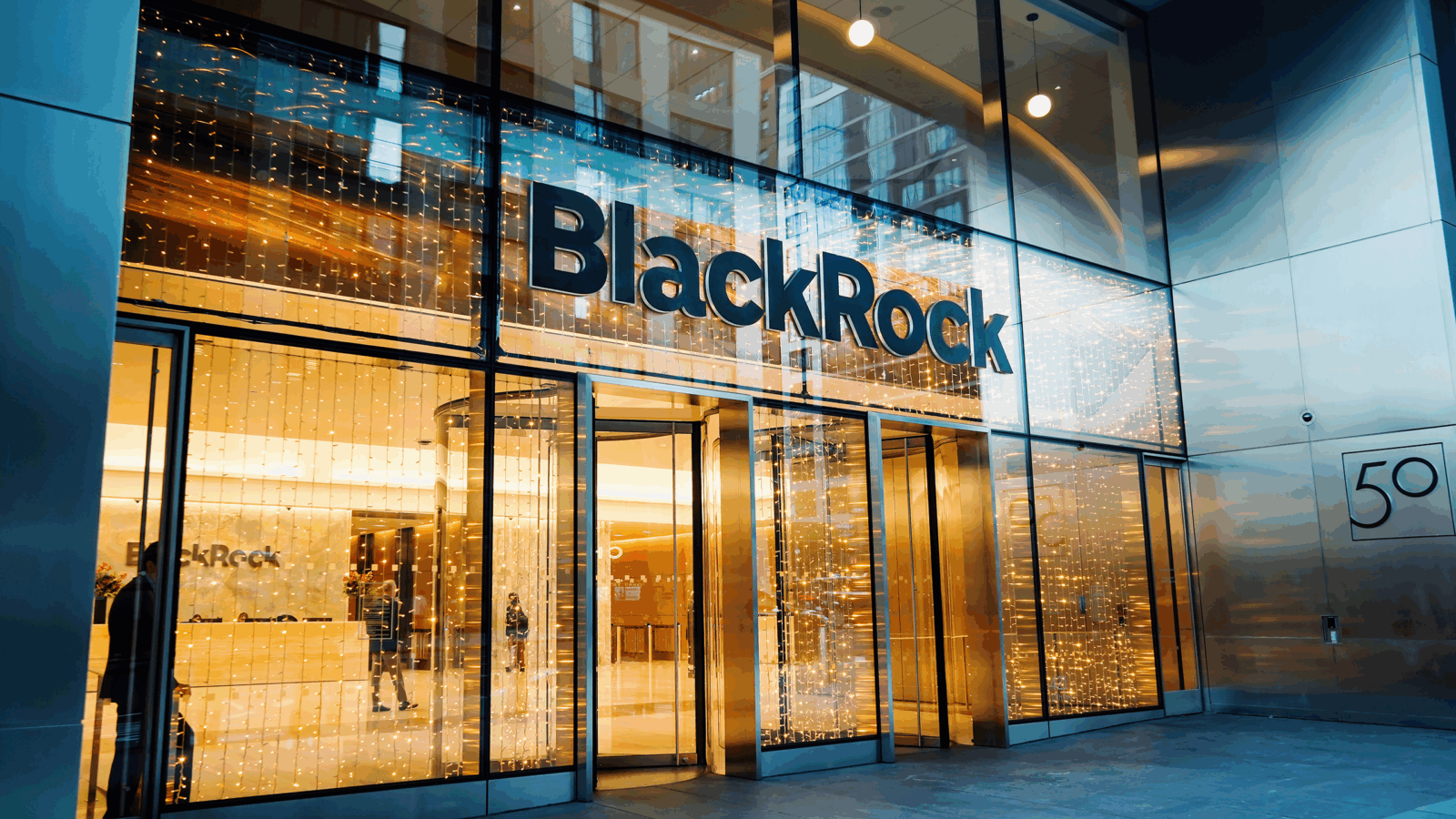Good morning.
Say what you will about the euro, it’s no longer as good as gold. The precious metal leapfrogged the currency as the second-largest global reserve asset last year, according to new data from the European Central Bank. As of the end of 2024, bullion made up 20% of global reserves at central banks, besting the euro’s 16% and trailing only the US dollar, which comprised 46% of worldwide holdings.
The combination of record high prices — gold rose 26% last year and is up more than 25% so far this year — with central banks increasing their holdings by over 1,000 metric tons in 2024 alone pushed it into second place. As if it weren’t precious enough.
Retail Investors Risk Ominous Opportunity Cost With Private Investments, Moody’s Warns

Is Wall Street unwittingly copying Wile E. Coyote’s newfangled traps for the Road Runner by promoting new products for individual investors that will invariably backfire? Maybe so, says Moody’s, which warned this week that increasing efforts to sell private equity and private debt funds to retail investors may not end especially well.
While there’s a chance the movement could open up “higher-return opportunities to ordinary investors” that were previously walled off, the ratings firm sounded the alarm that unmanaged growth “could have systemic consequences.” Risk yourself accordingly.
Private Dilemmas
The $1.7 trillion private credit, or private debt, market comprises financing from specialized firms, asset managers, private equity shops, and hedge funds that make loans to companies outside of the traditional bank-lending ecosystem. The sector took off after traditional banks pulled back from some risky lending when they were hit with tightened regulations following the 2008 financial crisis. The $4.7 trillion private equity market, meanwhile, involves investing in companies that don’t offer shares on the public market.
Private credit and private equity firms typically raise money for their funds from institutional investors like pensions and endowments. But with the sector exploding in size, private fund managers have launched initiatives to woo more capital by letting individual investors buy into the market through new retail products. In his annual letter to shareholders, Blackrock CEO Larry Fink pledged to open private markets to individual investors and declared it a core growth area for the firm. “Assets that will define the future — data centers, ports, power grids, the world’s fastest-growing private companies — aren’t available to most investors… they’re locked behind high walls,” he said.
More broadly, Moody’s said there is general cause for concern in inviting more individual investors into the private market:
- First, for the retail investors themselves: “One of the most pressing concerns for ‘Main Street’ investors is liquidity and the inherent lack of it in private markets,” the ratings agency’s analysts wrote. They then warned that, in times of market stress, investors “might not be able to access money at all” from illiquid private assets.
- They also warned that the handful of large firms that command the private-fund market frequently invest in the same deals, meaning investors could end up with investments that aren’t sufficiently diverse and thus “amplify systemic vulnerabilities.”
Second, there’s the risk to the funds themselves, which face “reputation loss, heightened regulatory scrutiny and higher costs” if individual investors’ access to cash isn’t delicately managed. “If growth outpaces the industry’s ability to manage such complexities, such challenges could have systemic consequences,” Moody’s wrote, essentially saying the entire financial system could feel the weight of any growing pains.
But Wait, There’s More: For private market funds, there’s also the risk that making private markets more like public ones would betray the fact that they “favor illiquidity premiums, price stability, small lending groups and discretion,” which would hurt the returns of private funds if they have to disclose more information. The other risk is the influx of cash itself, which Moody’s said will “inflame situations where demand is outstripping supply in a market that already has more than $4.2 trillion in dry powder.” Private funds have typically had years to deploy capital strategically, they noted, but “some managers may be tempted to compromise on underwriting standards or stretch into riskier assets to keep pace with inflows and capitalize on the opportunity.”
The “Great Wealth Transfer” Ahead For Women

Women are set to receive tens of trillions of dollars in the Great Wealth Transfer. This massive shift in wealth over the next 20 years will move more than $80 trillion across generations, and women are poised to inherit a significant share through spousal inheritance and generational transfers.
But this moment isn’t just about money. It’s about power changing hands, confidence rising, and more capital being used with purpose. Women are, on average, twice as likely as men to invest with social and environmental impact in mind. When women hold wealth, everyone benefits.
Created for the leaders shaping what’s next. This is the FQ Newsletter.
Switch 2 Becomes Nintendo’s Fastest-Selling Console
After an eight-year loading screen, Nintendo finally unveiled the Switch 2 five days ago — and it’s already the Japanese gaming giant’s fastest-selling console ever. Pent-up demand for the Switch 2 was on full display the night before it hit shelves, as fans in Mario hats lined up outside stores around the world.
The successor to the original Switch console sold 3.5 million units in its first four days, and Nintendo is targeting 15 million units for this fiscal year. Analysts think Nintendo can do laps around that goal — if the game-maker can keep up with demand (retailers like Walmart and Target were sold out as of yesterday).
For comparison, the first Switch console sold less than 3 million units in its first month on shelves and 152 million total.
Cruisin’ Down Rainbow Road
The Switch 2’s blockbuster debut is a boon for Nintendo and the greater gaming industry.
For Nintendo, the Switch 2’s success proves the “if it ain’t broke, don’t fix it” approach worked: The console improves upon but doesn’t deviate much from its predecessor (bigger screen, better graphics). Nintendo’s now counting on the Switch 2 to reverse its profit slump from last year.
At the same time, the Switch 2 could offset losses in the wider gaming industry:
- Gaming boomed during the pandemic when everyone was cooped up inside playing “Animal Crossing.” But in 2022, Newzoo reported the first annual drop in global gaming revenue in 10 years of tracking the industry. The gaming industry has hit a plateau as it competes for attention with social media and “Love Island.”
- The Switch 2 is expected to drive a surge in console and software sales this year, with a halo effect on broader enthusiasm and development. Next year, “Grand Theft Auto VI” is under similar pressure to prop up gaming.
Potential Banana Peels: During the Switch 2’s first few weeks on shelves, Nintendo can count on its biggest fans to scoop up the $450 console. But once the dedicated gamers are home playing the latest “Mario Kart,” Switch 2 sales could slow down as casual players are put off by its price tag, especially if Nintendo can’t ramp up supply quickly enough to keep stores in stock. Since two-thirds of Switch 2 consoles are made in China, keeping supply up and prices down could be a hard-mode-difficulty task for Nintendo.
Summer Travel Could Cost You More Than You Think. Congress is considering the Credit Card Competition Act — a bill that could dismantle the rewards programs you count on for points and miles. That would mean fewer rewards and pricier flights. Your European vacation? History. Don’t let your points take off without you. Sign the petition now to protect what you’ve earned.
Starbucks’ China Business May Need a Caffeine Jolt
To succeed in the venti-sized market, Starbucks may just be looking for a tal-sized investment.
In an interview with the Financial Times published Wednesday, Starbucks CEO Brian Niccol said the company is exploring a partial sale of its China business in a bid to restore growth in the Middle Kingdom. The news comes as its biggest competitor in the market — the rapidly ascendant Luckin’ Coffee — is starting to make inroads on Starbucks’ home turf.
For All the Coffee in China
When Starbucks arrived in China in 1999, opening a location in Beijing, it practically introduced freshly brewed coffee to the world’s most populous, traditionally tea-loving (and instant-coffee-drinking) country. Since then, coffee consumption in China has exploded. Consumption grew about 18% a year from 1999 to 2005, one local executive estimated to The Wall Street Journal way back in 2007. From 2010 to 2024, consumption expanded an average 21% a year, according to industry trade publication the Global Coffee Report.
Starbucks reigned as the coffee king of the Middle Kingdom for years … until it didn’t. Luckin’ burst onto the scene in 2017 with the energy of someone on three shots of espresso and rapidly expanded to 10,000 locations by mid-2023 (Starbucks currently operates 7,758 locations in China). In 2023 alone, China saw a 58% increase in the number of operating coffee stores as Luckin’ and other local brands proliferated, according to the World Coffee Portal — bringing its total coffee shop locations to nearly 50,000, the most of any country in the world.
For Starbucks, the rise of local competition has created something of a crisis:
- Last year, Starbucks generated just $3 billion in revenue in China, a grande-sized decrease from its $3.7 billion in sales in 2021, the company’s peak year in the country.
- A major reason for the decline: The company is struggling to compete on price, with local competitors regularly offering cups of coffee at half the price of Starbucks. Just this week, Starbucks announced price cuts on iced and tea-based drinks that remain incredibly popular in China.
Home Defense: The decline is why the company has been seeking “strategic partnerships” in the region, with Niccol telling the FT that the aim is to fix its “pricing architecture” in a bid to be more competitive. Speaking of competition: More just arrived on his doorstep. Luckin’ is planning to open its first US location in lower Manhattan soon, following fellow Chinese brand Cotti into the country. The move makes plenty of sense: Despite the rapid spike this century, China annually consumes only about 5 million bags of coffee, according to the US Department of Agriculture, compared with 20 million in the US. In other words: America is still the foamy, latte-topping crème-de-la-crème market of the coffee industry.
Extra Upside
- Dollar Sign of the Times: De-dollarization in Asia is accelerating, according to several expert observers.
- Great Eggspectations: US consumer prices climbed less than expected last month and eggs got a little bit cheaper.
- ConsumerDirect Has Helped Americans Save Over $3 Billion⁷ — generating $102 million in 2024 gross revenue¹. With ticker CNDR now reserved²⁴, they’re taking steps towards a potential public listing⁸. Join their mission — investors welcome.*
* Partner
Just For Fun
Disclaimer
*This is a paid advertisement for ConsumerDirect’s CF offering. Please read the offering circular at https://invest.consumerdirect.com/. Reserving the ticker symbol is not a guarantee that the company will go public. Listing on a national securities exchange is subject to approvals. Important details available in disclosures #1, #7, #8 & #24 of the attached link: https://bit.ly/3YApFU6

